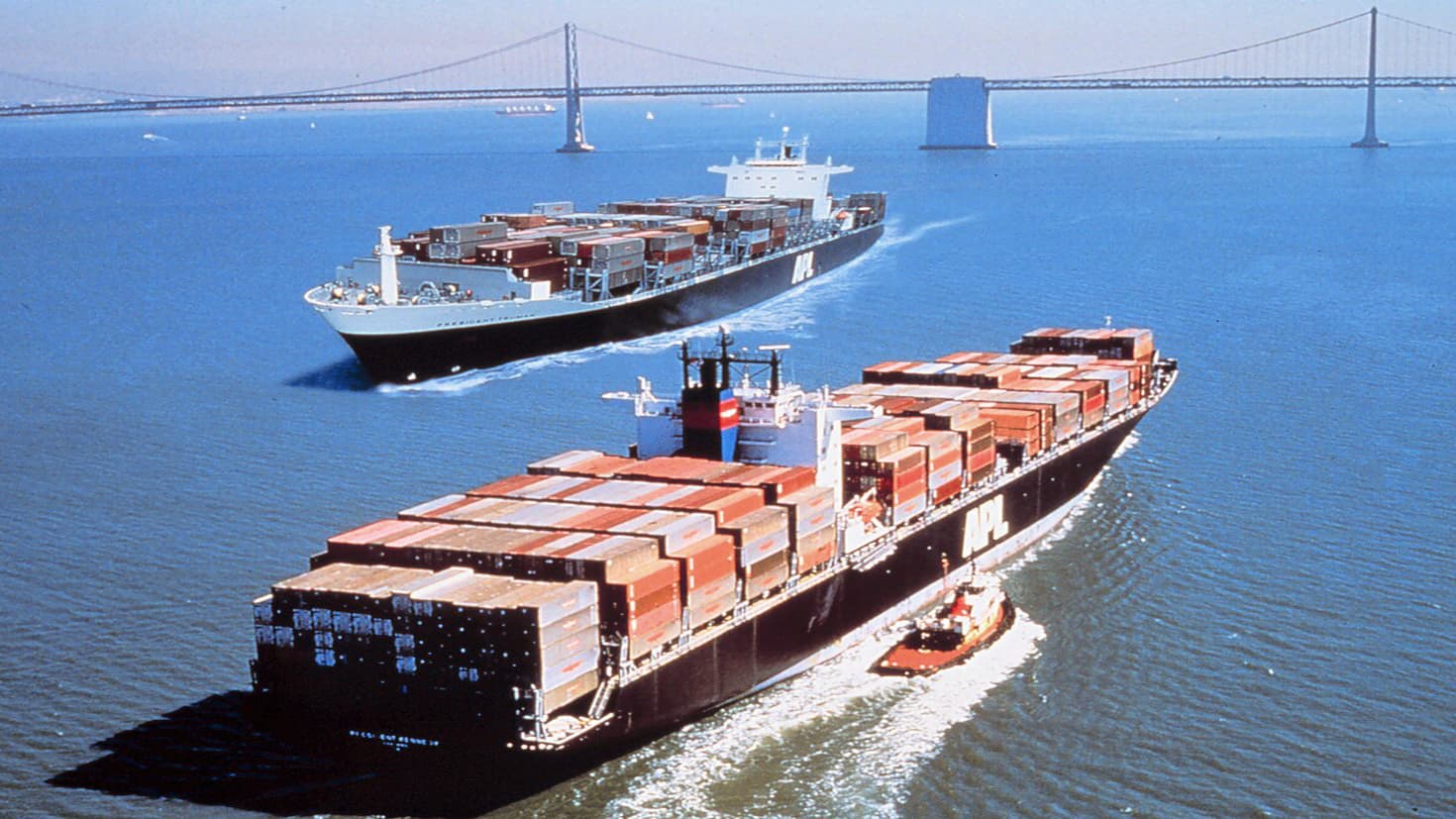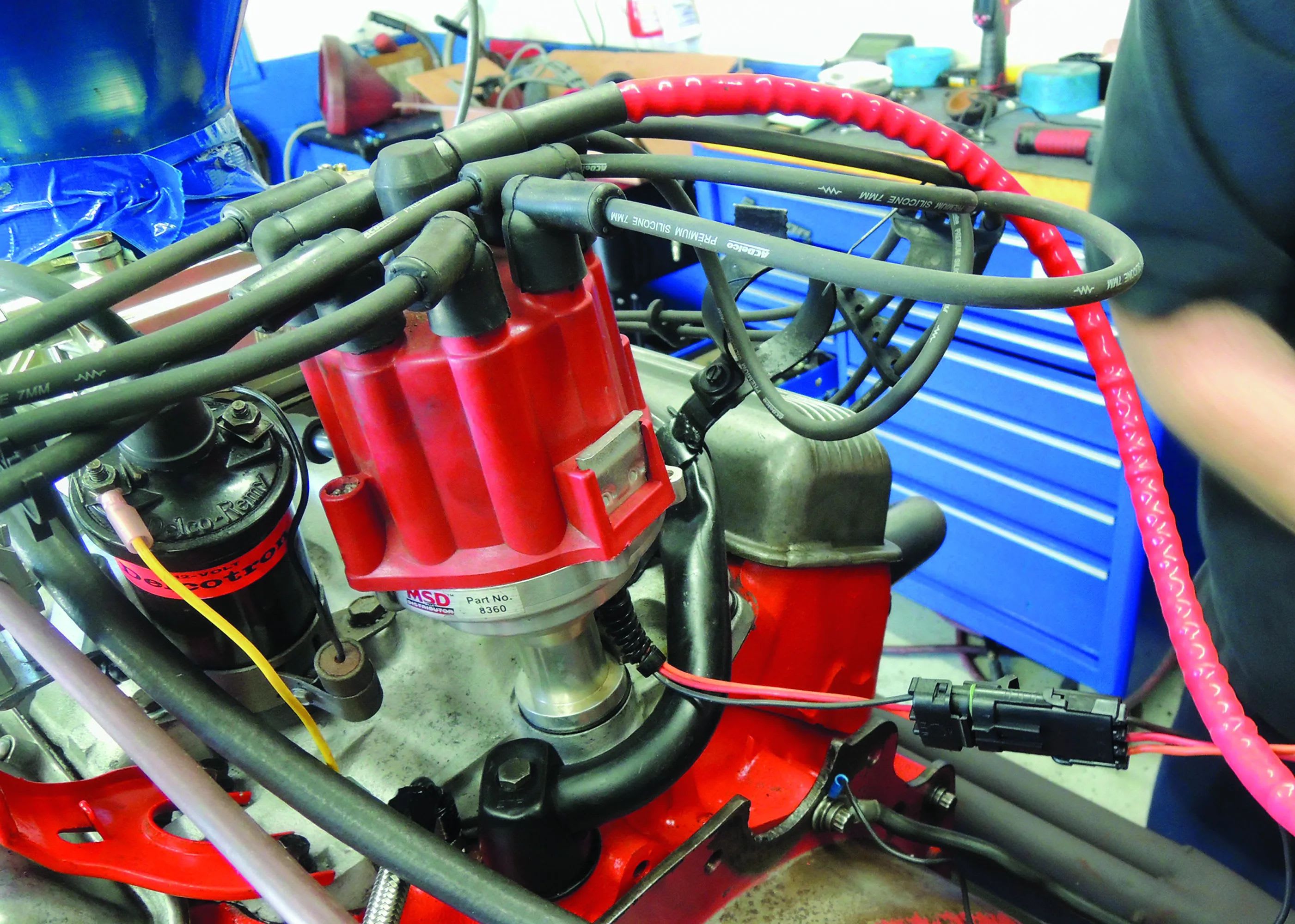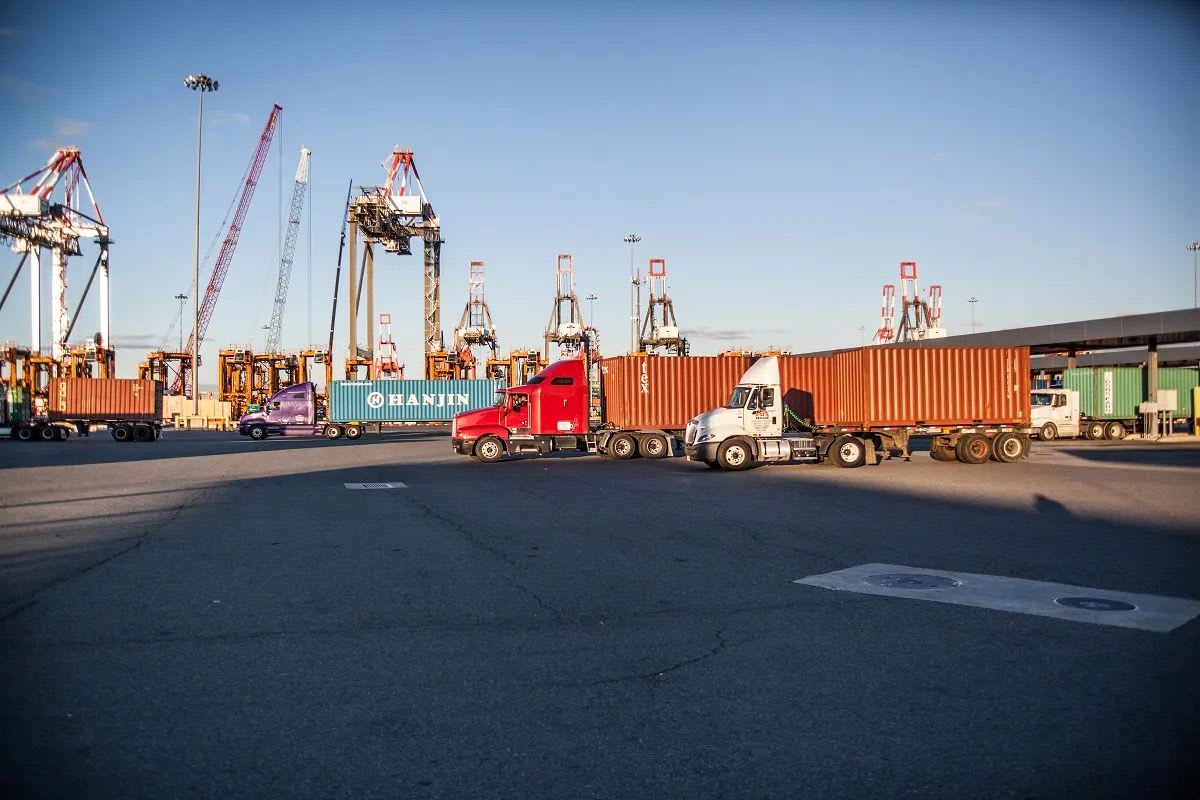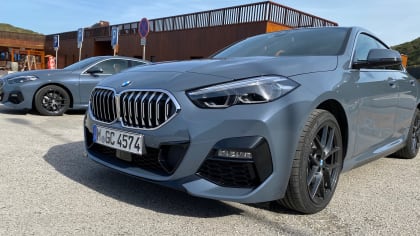A SOBERING LOOK AT TARIFFS FOR THE COLLECTOR CAR HOBBY

Hemmings Marketplace Editor Terry Shea takes a close look at how the tariffs are affecting his personal collector car hobby.
My 2016 Ford Focus RS wears a blue oval on the hood, but it wasn’t made in Detroit. Final assembly took place at Ford’s Saarlouis plant, tucked into a corner of Germany very near its borders with Luxembourg and France. Ford’s plant in Valencia on the Spanish Mediterranean coast built the engine and transmission, which included some American parts. The engine itself was based on a Mazda design originally engineered in Japan. A British supplier provided the rear end. When an ABS sensor failed, its replacement came from Hungary. It’s safe to say that my Focus is a truly global car
By Guest Author: Terry Shea
Sun, May 11, 2025 01:00 AM PST
Featured image above: The container ships President Truman and President Kennedy in the San Francisco Bay (undated public domain image courtesy of the California Publication of the National Oceanic & Atmospheric Administration, USA)
And it’s not just my Ford. My 2002 BMW M coupe was assembled in the Upcountry of South Carolina with a German engine and transmission. We’ve had three minivans over the years from Japanese automakers. All three have been assembled in the southern United States, with drivetrains manufactured here in the U.S. The tires on my ’67 Plymouth Barracuda, which were on the car when I bought it six years ago, are from South Korea.
Today, you can buy body panels for classic muscle cars that are stamped in Asia. Just about every component for a classic Chevy 350 V8, right down to the block and cylinder heads, is available out of China. If you’ve upgraded to an electronic ignition or EFI, there’s a very high likelihood that you’ve got foreign semiconductors in the little black box that controls either. The market for parts, even for classic cars, has truly gone global in the 21st century.
With the new tariffs on auto parts, buying upgraded parts or replacement components for things that fail has the potential to get a lot more expensive. Those increased costs are not likely to be limited to modern cars, either. While the Trump administration has allowed for a carve out for vintage cars with its tariffs on whole automobiles, that sort of exemption doesn’t appear to be coming for parts. The 25% tariff kicked in on May 3,2025.
If those parts are coming out of China, there is also the additional 20% “fentanyl” tariff applied to all goods coming from that country to punish it for its role in the supply of chemicals to the international drug trade. That added penalty will subject auto parts from the world’s manufacturing giant to a 45% tariff when they reach U.S. shores. The silver lining, if that’s even possible? At least auto parts are not subject to the general 145% tariff that otherwise applies to Chinese goods. That massive tariff and a similar Chinese response has already upended a significant amount of trade between the countries.
Last week, the Trump administration backed down a tiny bit, allowing for some temporary tariff relief on auto parts. When those components are used in vehicles with final assembly in the United States, Mexico or Canada, the tariffs may be rebated up to 3.75% of the car’s MSRP. Likewise, tariffs on aluminum and steel will not be “stacked” as an additional duty on vehicles and parts. But that tariff relief is only for parts installed in some new cars made in North America. So, where does that leave the parts we need to keep our collector cars going?

I’ve spent the past few weeks trying to determine how these tariffs will affect our hobby. Based on this administration’s well documented history of flip-flopping on tariffs, it has been rather difficult to get true clarity on how the situation will develop. Likewise, manufacturers and importers have been very reluctant to discuss the situation on the record. Still, we are beginning to see how a few scenarios are likely to play out.
WHAT IS A TARIFF?
Quite simply, a tariff is a tax on an imported product. These duties can be imposed for a variety of reasons: to raise revenue for the government, to provide protection for homegrown industries, or to punish another country, either for its trade policy or unrelated activities. In an ideal world, tariffs are negotiated between individual countries or in multinational trade agreements, like the USMCA (formerly NAFTA), but are sometimes unilaterally imposed.
CURRENT TARIFFS CHANGED IN 2025
Per the U.S. Constitution, only Congress can set tariffs, but Congress has ceded some of that authority to the president, most recently via the Trade Expansion Act of 1962. That act specifies that the president can act based on concerns for “national security,” which the administration has indeed cited, imposing tariffs on a variety of products and pretty much every country in the world, though some additional tariffs have been paused temporarily.
The Trump administration has imposed a 25% tariff on automobiles, additional tariffs on imported steel and aluminum, a “general”universal” 10% tariff on other goods, and a host of country-specific “reciprocal” tariffs loosely based on the U.S. trade deficit with those nations. While most of the reciprocal tariffs have been paused, a variety of tariffs that add up to 145% remain in place for Chinese goods, with some exemptions for electronics, pharmaceuticals, auto parts, and other categories. The paused tariffs can be resumed at the whim of the president.
Ultimately, importers of finished goods and manufacturers that import raw materials that are transformed into finished products in the U.S. will pay those tariffs at the time of import. Tariffs are typically imposed on the shipping and related insurance costs since that’s what it costs to get a product to port. Unless something changes dramatically, the bulk of the cost of the new tariffs will be passed onto consumers. There are multiple ways these costs can be passed on to the final purchaser.
HIGHER PRICES ARE ON THE WAY
There is almost no scenario with these tariffs in place where consumers cannot expect higher prices. First up, let’s dip into the math of just adding the tariff to a product.
Let’s say an alternator imported from Japan costs $50 off the boat in Long Beach. A reseller with a 50% gross margin will sell that alternator for $100. (We’ll ignore some other costs, such as domestic transportation, warehousing and other overhead, for this scenario.) Fast forward to next week and that alternator will cost the importer $62.50. To maintain that gross margin, the retail price would need to be $125.
Even if the seller accepted the same net profit ($50) at a lower gross margin, a consumer could expect a retail price of $112.50. However, for most companies, tighter margins will likely lead to secondary effects that could include reducing costs in other areas, be it marketing, warehousing or personnel. If the company is already operating in a product space with thin margins, the consequences could be dire.
That leads to the next possibility, which is consumers—car collectors in our case—rejecting higher prices and either skipping out on planned upgrades or deferring maintenance. This situation could occur even if there is an alternative component made in the U.S. because that product is likely priced significantly higher.

Even products manufactured in the U.S. may face higher prices. If the demand for the raw materials for U.S. production rises as more companies turn to domestic manufacturing, it’s logical to expect higher costs. It may also lead to a shortage or even the importation of additional raw materials, quite possibly at tariff-inflated prices.
WE LIKE CHEAP STUFF IN THE USA
In the era of Amazon Prime when there are many goods that can be delivered the same day and where most online/mail-order retailers have accepted free shipping as the cost of doing business, we are living the ultimate consumer dream of immediate satisfaction at the lowest possible price. Most of us yearn to buy American, to support our fellow workers and even U.S. companies. But how many of us are really willing to spend that extra money?
Despite deeply held sentiments, the answer is not that many. Afina, an American company that sells filtered showerheads recently ran a test. The company offered two identical showerheads on the same page of its website. One was made in Asia (China or Vietnam) for $129 and the other made in the USA for $239. The company insisted that the quality of materials and workmanship was equal. A buyer needed only check the clearly labeled box for his choice before adding the item to the virtual cart.
Afina kept track of its customers choices. Some 25,650 people visited the page with 3,560 adding the Asian-made showerhead to their carts and just 24 adding the American-made one to theirs. So, less than 1% would seem to be the answer to the question of who would pay more. Well, not so fast.
You see, just putting that item in the cart doesn’t count as a sale. Ultimately just 584 customers bought showerheads during the testing period. Exactly zero people purchased the American-made version that was priced 85% higher than the one from Asia. Zero. Let that sink in.
Over and over again as the vast majority of consumer goods production has shifted overseas, Americans have chosen with their wallets. Ask yourself, if you could buy high-performance cylinder heads made in China for a thousand bucks or American-made ones for three times as much, which would you really choose?
THE COMPLICATIONS AND EXPENSE OF REPATRIATING MANUFACTURING
Even if car collectors were willing to pay more—in some cases substantially more—the hurdles to setting up manufacturing in the U.S. are daunting. Manufacturing is a massively capital-intensive thing to do, and it comes with lots of regulatory hurdles. It also doesn’t happen overnight. Businesses need to make some very specific and very expensive plans, but many are paralyzed due to the constantly changing tariff situation. “Chaos” is a word that has been used repeatedly in news stories regarding tariffs these past few months.
Karen Bailey-Chapman, Senior Vice President of Public and Government Affairs for the Specialty Equipment Market Association (SEMA) shared this perspective with Hemmings: “The volatility is actually almost worst that the tariffs themselves. If they knew what the tariff was, we can then accommodate and do the longer-term planning for that. I am not dismissing the tariff part of it, but the volatility has been the biggest challenge.”
Bailey-Chapman was also keen to share that re-domesticating a lot of the manufacturing that has left the country presents a challenge greater than slapping a big tariff on the imported product. “That is not necessarily something that will be solved simply by tariffs and incentivizing manufacturers to come back to the U.S.,” she told Hemmings. “There’s a whole regulatory structure that has to be changed, mainly in the environmental space and the EPA as to how do we allow these products [to be manufactured in the U.S.].”
POTENTIAL SUPPLY-CHAIN ISSUES
In the tit-for-tat of tariff games being played on the world stage, certain raw materials and subcomponents may become available. Remember the situation just a few short years ago when the world stopped for a few months and then restarted in kicks and spurts, sputtering along with a massively wounded supply chain for an extended period? Shortages, hoarding, and inflation became commonplace. It could very well be a repeat of the situation that occurred during and following the Covid-19 outbreak.
WHAT CAN BE DONE?
While some automakers are using certain gimmicks to hold down prices on new cars (Ford’s “employee pricing” program comes to mind), such tools are trickier when it comes to parts that can’t be absorbed by the entire cost of a car assembled in North America.
As Bailey-Chapman from SEMA indicated, businesses can navigate tariffs to a certain degree, but they need long-term stability to get there. Right now, that’s not in the cards. She did tell us that a number of SEMA members who were in a position to do so have spent the past few months building up their inventories. That inventory may serve car collectors for a while, as least, though smaller companies, or those that are strapped for cash, have had a harder time doing so and will be in a more challenging position.
Supporting manufacturers with American factories is another option, though that may require spending measurably more on a product if you had grown accustomed to a global price. If you’ve budgeted only a certain amount to your collector cars this year, you might need to prioritize your needs and make decisions based on a new budget.

Given that the administration has instituted, changed, paused, resumed, paused again, changed again and otherwise altered all of the announced tariffs, we will do our best to keep our readers. I think we can expect additional movement on the numbers, though the timeline is anyone’s guess.
* Guest Author Terry Shea is the Marketplace Editor for Hemmings. He’s also a road trip aficionado, fan of DIY shifting and driving with both hands and both feet. Student of automotive history and the car’s relevance to society. “I’m not afraid to get my hands dirty in the garage, but usually learn things the hard way.”
Hemmings is the creator of Hemmings Motor News, which has become the largest antique classic, vintage, muscle, street rod, and special interest auto marketplace. To see its website, click here.
About The Author
Terry Shea
Guest Contributor





